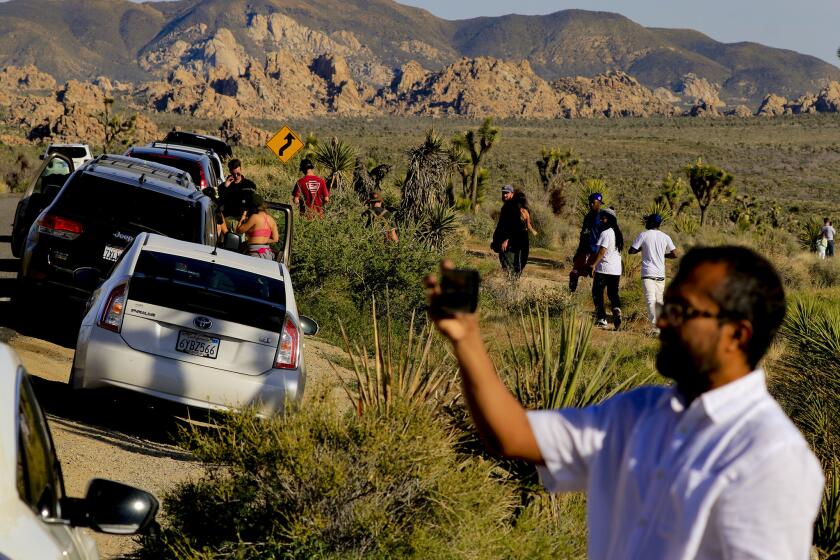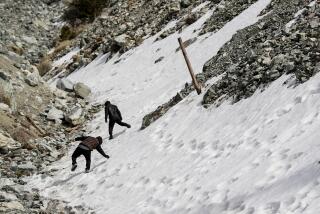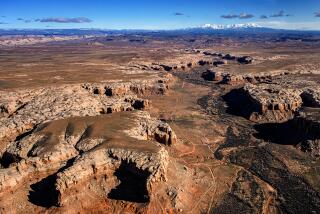Fed up with Forest Service cuts, Mammoth Lakes and other towns are plotting a recreation takeover
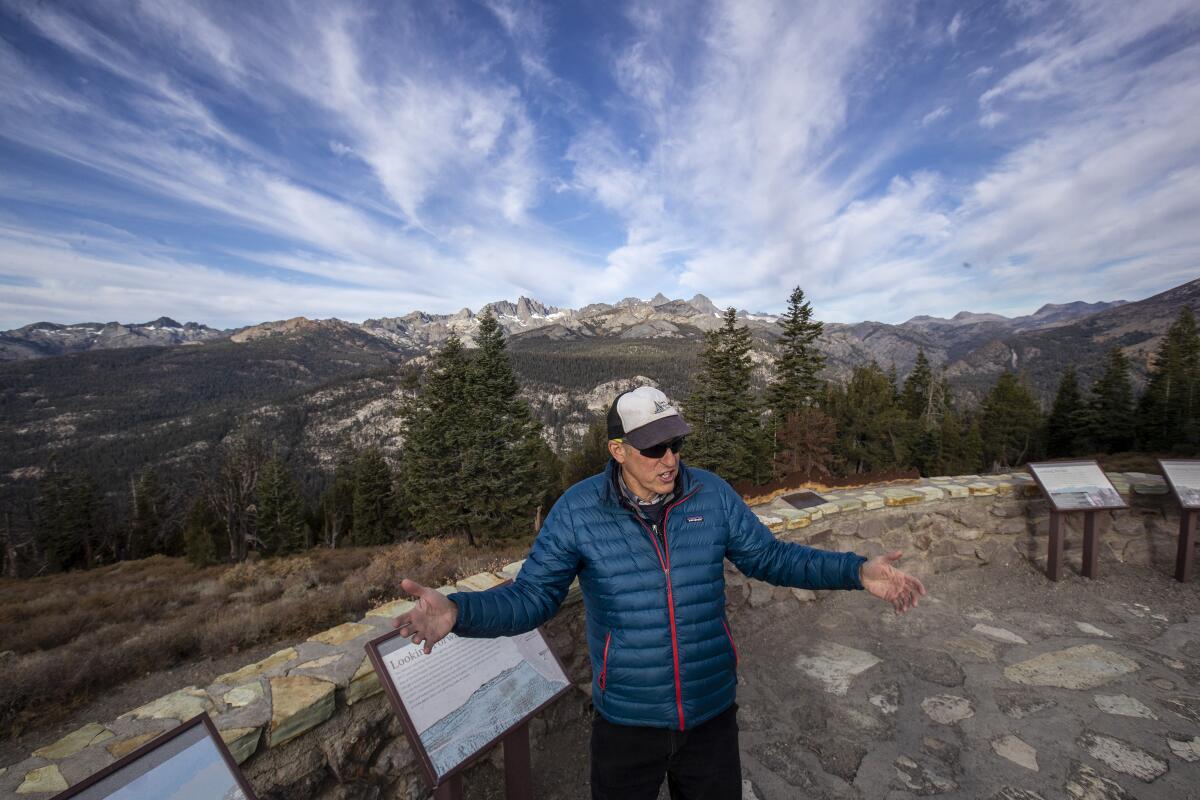
Just west of this Sierra Nevada town, thousands of people trundle out to boulders as big as billboards, carrying climbing gear and foam pads to break their inevitable falls.
They park haphazardly along dirt roads, litter and smash vegetation with their crash pads. On a recent morning, there were no rangers in sight at the Buttermilk Country climbing site, and only one functioning toilet.
Naturalist John Muir glorified the Mono Basin in his writings, but now a visitor center there is plagued by stinging wasps and a leaky roof.
The only access to Devil’s Postpile National Monument is a dangerously narrow lane that winds unevenly along steep slopes.
The chronically underfunded U.S. Forest Service is partly responsible for these conditions, and some local officials in the Eastern Sierra are fed up with it.
“Something has to change,” Mammoth Lakes Councilman John Wentworth said. “The Forest Service is overwhelmed,” he said, by 21st century challenges its founders could never have imagined: climate change, budget cuts, electric mountain bikes.
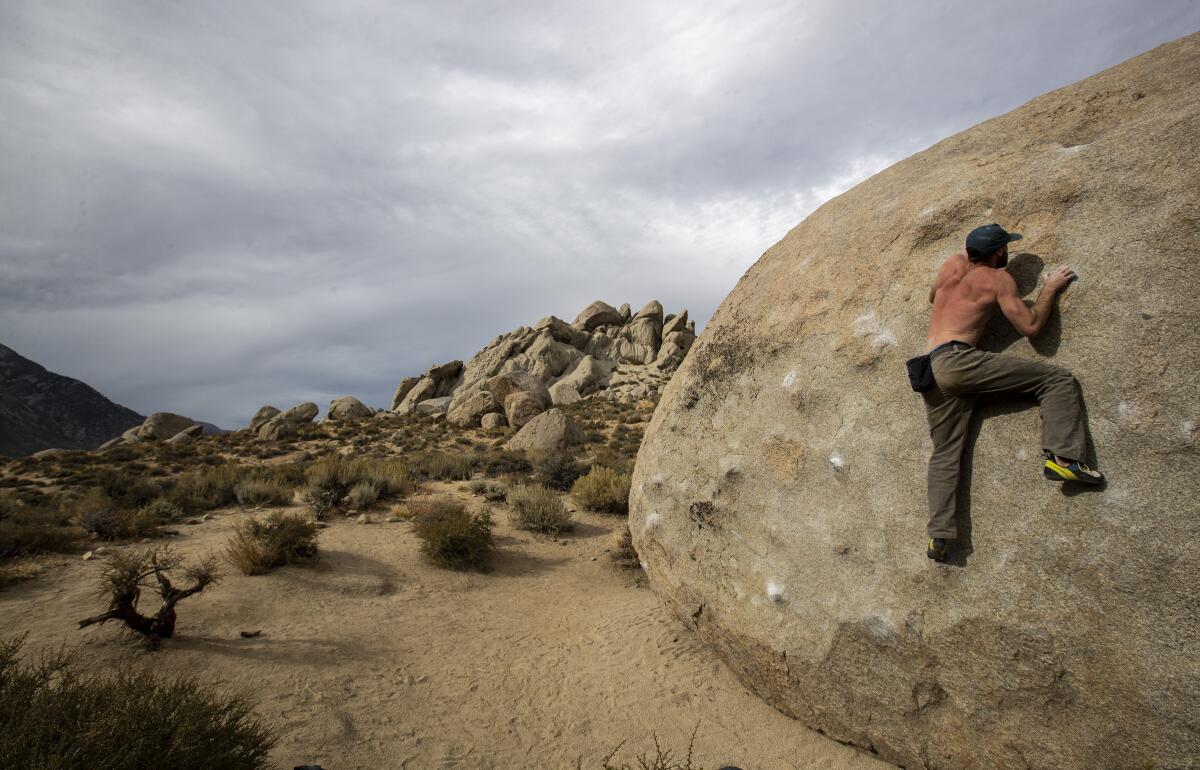
Wentworth leads an ambitious and controversial proposal that would allow Eastern Sierra cities and counties to fund, staff and maintain tourism and recreation projects, including some that have lingered for decades in the Forest Service’s deferred maintenance backlog, which totals more than $5.2 billion nationwide.
Called the Eastern Sierra Sustainable Recreation Partnership, the project would establish a new economic alliance among the Forest Service and the communities of Mammoth Lakes and Bishop and three counties — Inyo, Mono and Alpine. Local government agencies would take the lead in developing water systems and sewers, roads, campground services, restrooms, trails and signage in some of the Sierra’s most heavily visited corners.
The Trump administration is mulling proposals to further privatize national parks and limit the use of senior passes there, setting off an angry backlash from conservation groups and retirees.
The idea is popular in mountain towns that have struggled with economic development, but it worries some conservationists and local officials who want the region to retain its wild spaces and rustic personality.
“This big idea seems to be driven by commerce rather than science,” said Sam Roberts, president of the nonprofit Friends of the Inyo and a lifelong wildlife photographer and rock climber in the Sierra. “At stake is the character of the wilderness experience.”
Chris Lizza, a Mono County planning commissioner and owner of a grocery store in the Mono Basin community of Lee Vining, contends the proposal “would empower the Forest Service to continue neglecting its responsibility to maintain our national forests.”
Other critics shun the idea of local communities sharing management decisions on the public lands.

In response, Wentworth said the proposed partnership is all about trying to preserve the Eastern Sierra for future generations.
“The forces that will compromise the great wilderness legacy of John Muir are already at work,” he said.
The Mammoth Lakes councilman said he adheres to a philosophy of Sierra capitalism: Recreational opportunities can be improved and ecosystems restored when people understand the monetary value of the region’s marketable resources.
To that end, he is using a portion of a $618,750 state grant to hire an analytical firm that will calculate a dollar value for Muir’s majestic landscape, which includes the world’s oldest trees and Mt. Whitney, the tallest peak in the lower 48 states.
“Putting a price tag on the Eastern Sierra may sound crass,” he said of the grant, which comes from Proposition 68 funds that the state Sierra Nevada Conservancy recently awarded to Mammoth Lakes. “But it’s an important step toward developing well-managed, sustainable recreation and tourism opportunities.”
Tami Randall-Parker, superintendent of the nearly 2-million-acre Inyo National Forest, would not argue with any of that.
A few more rangers, a parking area and a campground would help in heavily used areas, she said, but budget restraints have made that all but impossible.
Over the last decade, the Forest Service has been shrinking recreation and maintenance programs to pay for the rising costs of fighting fires and reducing wildfire threats to communities.
At the same time, Congress has been reducing the agency’s resources. The 2019 Forest Service budget is $4.77 billion, a decrease of $486 million from the fiscal year 2018 amount. It includes $1.72 billion for the management of national forest lands and $2.5 billion for wildland fire management, according to federal documents.
“We need your help,” said Randall-Parker, speaking to more than 100 retirees, conservationists, business owners and government officials at a fairgrounds hall in Bishop on a recent weeknight.
Randall-Parker ticked off the assets of the Inyo National Forest, which include “70 campgrounds, 38 recreational resorts, seven marinas, five visitor centers, 32 water systems, seven wastewater treatment facilities, 1,200 miles of trails, 3,300 miles of roads and 600 toilets.”
“And most of what we have was built in the 1950s,” she added.
With a population of 18,000, Inyo County had a median income of $51,500 in 2017, compared to a statewide average of $67,169, according to the U.S. Census. Some hope tourism will help the county transition from its past dependence on resource extraction and the region’s largest land owner and employer, the Los Angeles Department of Water and Power.
“Not so long ago, we were just a pit stop for people going to Lake Tahoe and the Mammoth Mountain ski resort,” Tawni Thomson of the Bishop Area Chamber of Commerce, said. “But mining is no longer paying the bills. Tourism is, and we need infrastructure to make the most of it.”
“We’ve become a wonderland of recreation,” she said. “But we don’t have places for boulderers to camp or great trails for mountain bikers, so people are throwing sleeping bags down on the dirt wherever they want and cutting their own trails.”
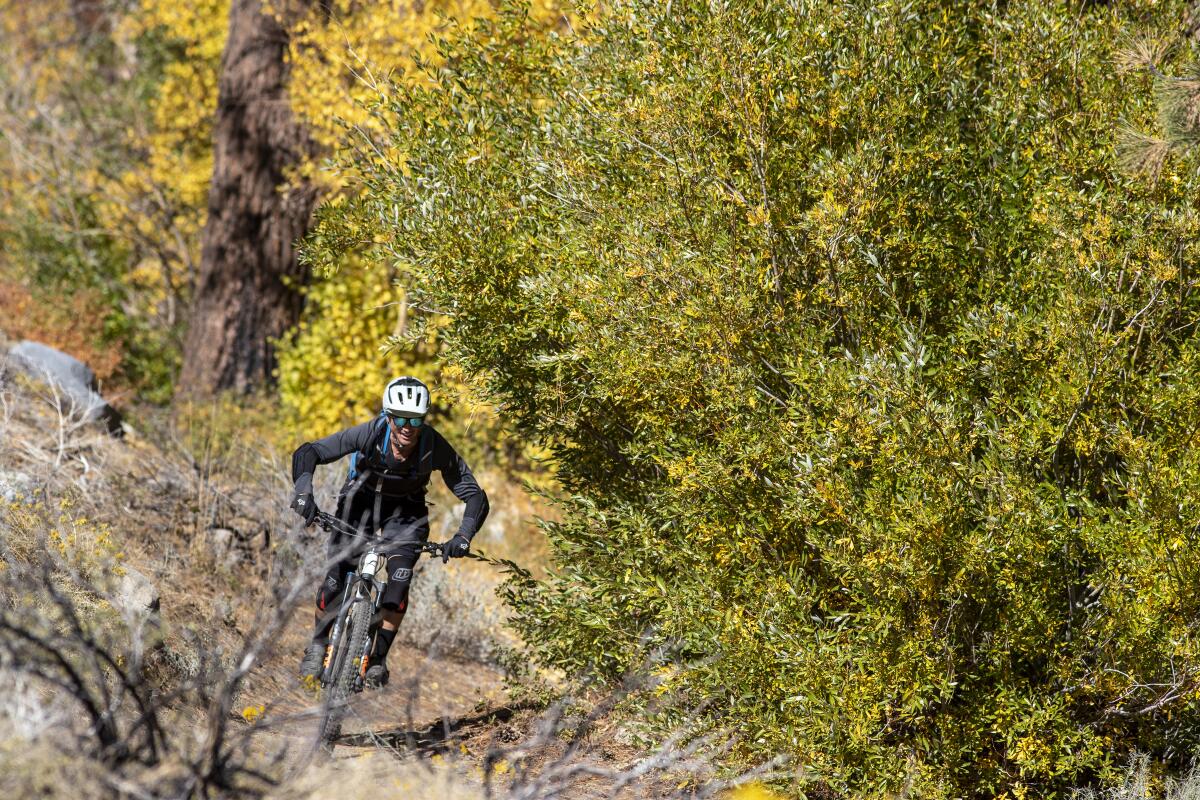
Some environmentalists cringe over proposals to open up more public lands to mountain bikes.
With their knobby tires, mountain bikes can carve ruts into trails, trample vegetation, widen paths and accelerate erosion, especially after rains. Their downhill speeds can also startle other trail users.
“Mountain bikes turn trails into dust bins,” said Lynn Boulton, president of the Sierra Club Range of Light Group in Mammoth Lakes.
“To me, the Sierra is priceless,” she added. “But Wentworth must be reading different books than I am.”
Wentworth, who grew up in Medford, Ore., and moved to the ski resort of Mammoth Lakes in 2000, previously worked in the entertainment industry, including with filmmaker David Lynch on the acclaimed films “Blue Velvet” and “Mulholland Drive.”
No stranger to controversy, he helped lead a campaign in Mammoth Lakes in 2015 to let more homeowners transform their homes into lucrative nightly rentals.
Residents rebelled strongly and forced the issue to a vote. Fearing that Wentworth and other council members were going to expand nightly rentals into residential zones, 70% of voters in the town of 8,000 approved a measure barring the council from acting on the issue.
Some now suspect the recreation partnership is aimed at delivering the best projects to Wentworth’s hometown.
Wentworth didn’t shoot down that assertion in an interview.
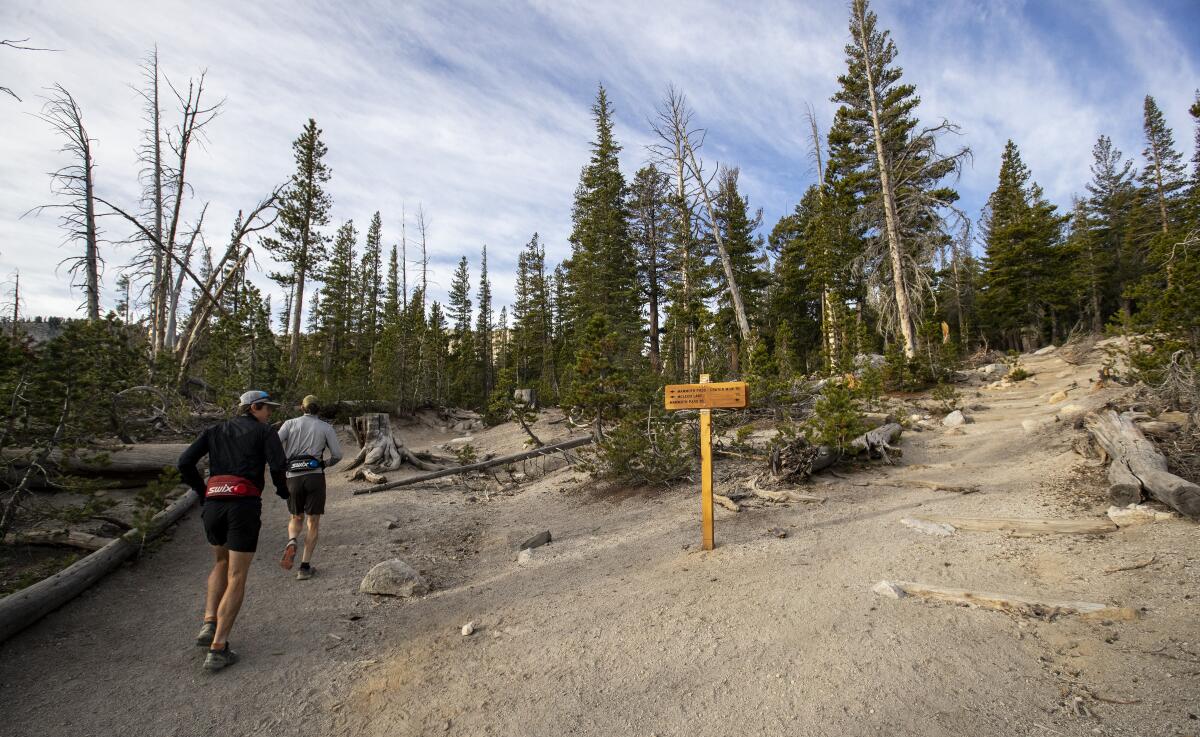
“People should think of Mammoth Lakes as a laboratory,” he said, “for testing the best pilot projects we can come up with.”
Leaders of the effort say it will take at least two years to both decide on a formal list of projects and securing funds for them, through grants and possibly even local tax measures.
Dozens of projects are under consideration in communities across a 160-mile stretch from Bridgeport down to Olancha.
They include new restrooms at Horseshoe Lake, a scenic area cradled by granite peaks near Mammoth Lakes; maintaining and staffing visitor centers: hiring people to patrol rock climbing hot spots such as the Alabama Hills west of Lone Pine, a community of about 7,000 people at the southern end of the Owens Valley.
In rustic Alpine County, where about one fifth of the population of 1,200 people live below the poverty line, officials want to launch a mountain bike trail like no other.
“It would take two weeks to traverse and include campgrounds along the way,” Alpine County Supervisor David Griffith said. “It would be an experience to tell people around the world about.”
But Roberts, the head of Friends of the Inyo, fears local officials are pushing a slew of well-intentioned recreation projects without a full appreciation of what makes the Eastern Sierra special.
“John Muir,” he said, “is spinning in his grave.”
